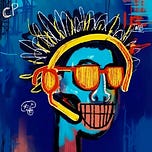
Casey Reas is a pioneer computational artist with a career that spans multiple decades. He created generative collections such as CENTURY and 923 Empty Rooms. Casey co-founded Processing, a software used by tens of thousands of students, artists, designers, and hobbyists, and Feral File, a leading global art gallery hosting transformative exhibitions by some of the world’s most revered digital artists, such as Tyler Hobbs, Refik Anadol, Dmitri Cherniak and many more. He is also a Design Media Arts professor at UCLA.
Listen now on Apple, Spotify, and Google.
In today’s episode, we discuss:
[1:30] The concept, story, and showcasing of Casey’s recent collection —923 Empty Rooms with Bright Moments and Art Blocks. An early version of the collection was exhibited at bitforms gallery in New York and commissioned by LACMA. Another show will be exhibited in bitforms again in November.
[9:45] Creating computer art before and after the blockchain. How Casey creates a system to see the outputs from an algorithm and showcase them to others. In contrast, with the blockchain, you need to be comfortable that every piece of the system works as intended, so it is very intensive.
[13:95] The role of a curator is similar to that of an educator. Casey didn’t expect to become a curator but needed to do it when he created Feral File. He really enjoyed curating the show Social Codes.
[15:45] About Feral File and putting curators at the centerpiece of the shows. References: Tina Rivers from the Buffalo Art Museum, Christiane Paul from the Whitney Museum. Artists have been curating exhibitions, too; for example, Rick Silva, Aaron Penne.
[17:20] Feral File 2.0 and its evolution over the years. Trying to establish a community between artists, collectors, and curators. Inclusion of sets.
[21:15] Upcoming Blind Gallery and Feral File collaboration — Vistas — based on the landscape theme. Casey shares his view on landscape creations from 20 to 15 years ago and how that has changed in conjunction with technology.
[25:30] How does Casey’s teaching practice at UCLA School of Arts and Architecture influence his art practice?
[29:00] The early days of Processing (it has been 22 years since its creation). It was born at the MIT Media Lab by Casey and Ben Fry when they were learning from John Maeda.
[35:00] Advice on creating art while co-founding many initiatives and successful projects: collaborate and work effectively with others.
[38:50] Thoughts on the future of the computational art space, looking 20 years from now: In the past (1960/1970), most people worked in the dark, looking for opportunities or funds. It was tough. I want a future with more options for artists working in this medium. Coded Show LACMA is a great example.
[45:00] Multiple upcoming shows: Opening in Berlin and London, which wraps up his recent work with Machine Learning and synthetic photography, and a new series of work will also be showcased.
Until next time,
- Kaloh












